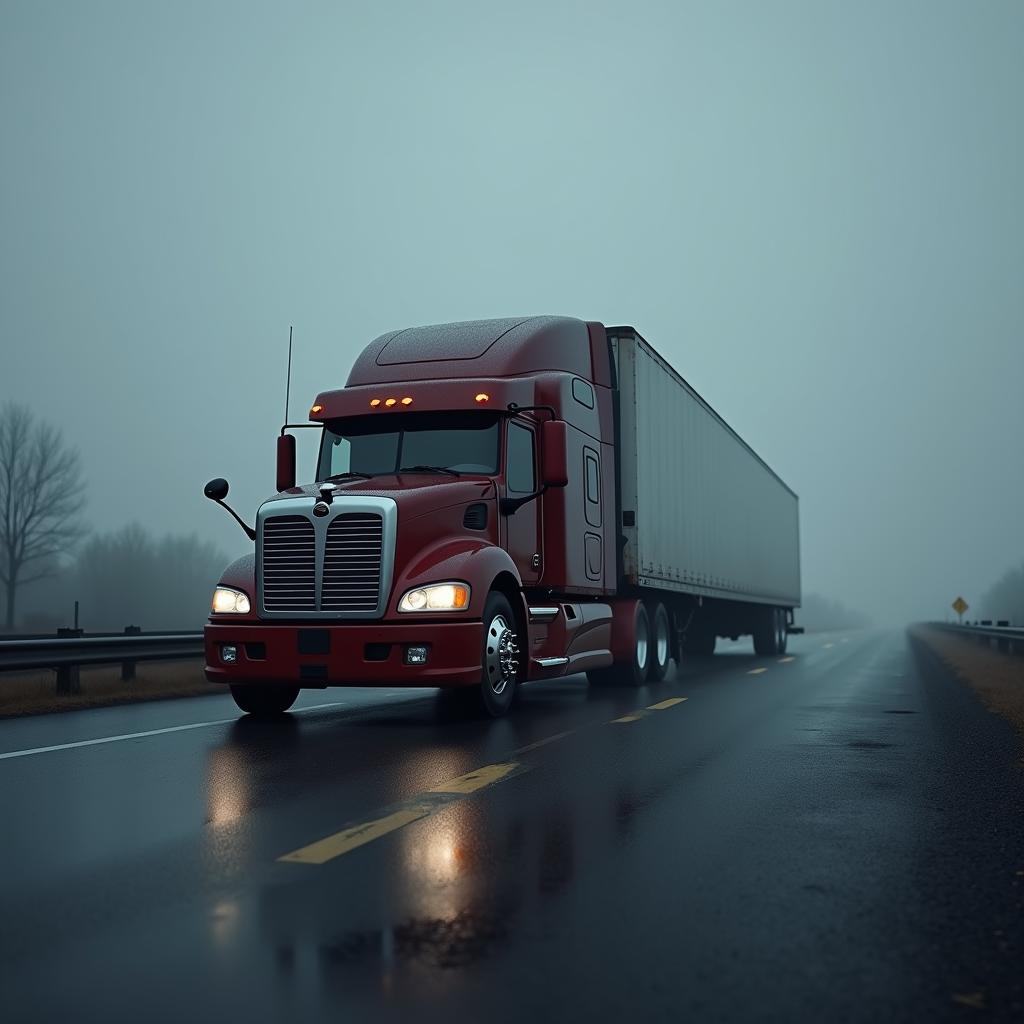Ever felt a calling to make a difference in the transportation industry? Starting a trucking nonprofit organization might be your path to creating meaningful change. The highways that connect our nation are more than just concrete ribbons—they’re lifelines for communities, businesses, and individuals in need. In today’s world, where logistics and transportation play crucial roles in disaster relief, community support, and economic development, a charity focused on trucking services can fill critical gaps in our social safety net.
Whether you’re a seasoned trucking professional looking to give back or someone who recognizes the unique power of transportation to transform lives, establishing a trucking charity is a noble endeavor that combines practical skills with philanthropic impact. From delivering essential supplies to disaster zones to providing job training for aspiring drivers from underprivileged backgrounds, the possibilities for service are as vast as the open road itself.
In this comprehensive guide, we’ll navigate the journey of creating a trucking charity from initial concept to full operation, covering everything from legal requirements to fundraising strategies specific to the transportation sector. Buckle up as we explore how to transform your vision of a service-oriented trucking initiative into a road-worthy reality!
Understanding the Landscape: Why Start a Trucking Nonprofit Organization?
Before hitting the accelerator on your charity plans, it’s essential to understand the unique position trucking charities hold in the nonprofit ecosystem. These organizations leverage transportation assets—vehicles, driving expertise, logistics knowledge—to address various community needs.
The transportation charity sector includes organizations that:
- Deliver food, medical supplies, and essentials to disaster-affected areas
- Transport donated goods to communities in need
- Provide moving services for vulnerable populations (veterans, domestic violence survivors)
- Offer driver training programs for unemployed individuals
- Support truck drivers facing hardships through financial assistance
According to the Federal Emergency Management Agency (FEMA), transportation plays a critical role in disaster response frameworks, highlighting the essential nature of mobilizing resources quickly during crises. This demonstrates just one of many ways trucking charities fulfill crucial societal needs.
Identifying Your Mission and Niche
The highway to success for your trucking charity begins with clarifying your specific mission. Will you focus on disaster relief logistics, helping homeless individuals relocate to permanent housing, or perhaps creating driving opportunities for underserved communities?
Consider these questions to define your charity’s focus:
- What transportation-related needs exist in your community or region?
- Where do your personal passions and experiences intersect with transportation services?
- Which potential beneficiaries are currently underserved?
- What unique resources or connections do you bring to the table?
Your answers will help solidify your mission statement—the GPS that will guide every subsequent decision about your trucking nonprofit organization.
Legal Roadmap: Establishing Your Trucking Charity
Transforming your vision into a legally recognized charity requires navigating several important regulatory steps. This foundation will enable your organization to operate legitimately, receive tax-deductible donations, and establish credibility with partners and donors.
Incorporating Your Nonprofit
Begin by formally establishing your organization as a nonprofit corporation in your state:
- Choose a unique, mission-relevant name (and verify its availability)
- File articles of incorporation with your state’s secretary of state office
- Create bylaws that outline governance structures and operational procedures
- Appoint an initial board of directors (ideally including individuals with trucking industry experience)
- Apply for an Employer Identification Number (EIN) through the IRS
Securing 501(c)(3) Tax-Exempt Status
To operate as a tax-exempt charity and offer tax deductions to donors, you’ll need to complete IRS Form 1023 or 1023-EZ to apply for 501(c)(3) status. This comprehensive application requires:
- Detailed descriptions of your planned charitable activities
- Projected budgets and financial plans
- Governance policies and conflicts of interest procedures
- Demonstration that your organization serves public (not private) interests
The application process typically takes 3-6 months or longer, so plan accordingly. Consider working with a nonprofit attorney to navigate this critical step successfully.
Transportation-Specific Regulations
Trucking charities face additional regulatory requirements specific to the transportation industry:
- Commercial Driver’s License (CDL) requirements for drivers
- Department of Transportation (DOT) registration and compliance
- Federal Motor Carrier Safety Administration (FMCSA) regulations
- Insurance requirements for commercial vehicles
- State-specific transportation regulations
According to the Federal Motor Carrier Safety Administration, even nonprofits must comply with safety regulations when operating commercial motor vehicles. Ensure your organization builds these compliance costs and processes into your operational plan.
Building Your Fleet: Vehicles and Infrastructure
The backbone of any trucking nonprofit organization is its fleet—the vehicles that will carry out your mission. Assembling appropriate transportation resources requires strategic planning and creative approaches to maximize impact while managing costs.
Fleet Acquisition Strategies
Consider these approaches to building your vehicle resources:
- Vehicle donations: Develop programs encouraging businesses or individuals to donate trucks, vans, or other vehicles (offering tax deductions as incentives)
- Corporate partnerships: Approach trucking companies for retired but serviceable vehicles
- Grant funding: Research transportation-specific grants that could fund vehicle purchases
- Lease arrangements: Explore reduced-cost leasing options for charitable purposes
- Volunteer vehicles: Create programs where truck owners volunteer their vehicles and time
Infrastructure Considerations
Beyond vehicles themselves, your charity will need supporting infrastructure:
- Secure parking facilities for your fleet
- Maintenance capabilities (either in-house or through partnerships)
- Loading/unloading facilities if handling significant cargo
- Dispatch and logistics coordination systems
- Storage facilities for goods being transported
Start small with essential infrastructure and expand as your organization grows. Many successful transportation assistance nonprofits begin with shared facilities or partnerships with existing businesses before investing in dedicated infrastructure.
Fueling Your Mission: Funding and Sustainability
Keeping your trucking charity’s wheels turning requires sustainable funding sources. Transportation-focused nonprofits have unique funding challenges and opportunities compared to other charitable organizations.
Diverse Revenue Streams
Develop multiple funding sources to ensure stability:
- Grants: Research transportation-specific grant opportunities from foundations, corporations, and government agencies
- Corporate sponsorships: Approach logistics companies, truck manufacturers, and related businesses for partnerships
- Individual donations: Build a donor base including truck drivers, transportation professionals, and beneficiaries of your services
- In-kind donations: Solicit fuel, maintenance services, parts, and other non-cash contributions
- Earned income: Consider developing fee-based services that support your mission while generating revenue
Industry-Specific Fundraising Strategies
Get creative with fundraising approaches tailored to the transportation sector:
- “Sponsor a Mile” campaigns where donors contribute based on miles driven for charitable purposes
- Truck show fundraisers showcasing custom or antique trucks with entrance fees supporting your cause
- Driver-focused fundraising events at truck stops or transportation hubs
- Partnerships with electronic logging device (ELD) companies for round-up donation programs
- Corporate freight donation programs where businesses donate a percentage of their shipping costs
When applying for grants or seeking major donations, emphasize the unique cost-effectiveness of transportation-based charity work. Every dollar invested in transportation can multiply its impact by delivering thousands of dollars worth of essential goods to communities in need.
Driving Impact: Programs and Services
The heart of your trucking nonprofit organization lies in the programs and services you provide. Successful transportation charities develop well-defined offerings that directly address community needs while leveraging their unique capabilities.
Core Program Models
Consider these proven program structures for trucking charities:
- Disaster response logistics: Coordinating transportation of supplies to disaster-affected areas
- Food delivery systems: Transporting food to food banks, shelters, and rural communities
- Medical equipment transport: Moving specialized equipment to healthcare facilities or individuals
- Relocation assistance: Helping vulnerable populations move to new housing
- Driver training programs: Teaching commercial driving skills to create employment opportunities
- Truck driver support services: Providing assistance to drivers experiencing hardships
Program Development Best Practices
As you design your charity’s offerings:
- Start with pilot programs to test your concept and refine operations
- Establish clear eligibility criteria for beneficiaries
- Develop systems to measure and track your impact
- Create structured volunteer programs with appropriate training
- Build feedback mechanisms to continuously improve your services
Remember that successful trucking assistance programs maintain a balance between responding to immediate needs and addressing systemic issues. While emergency transportation services provide critical relief, consider how your organization might also address root causes through education, advocacy, or economic opportunity programs.
Building Your Team: Staff, Volunteers, and Partnerships
A successful trucking charity requires passionate people with diverse skills. Your organization will need individuals who understand both transportation logistics and nonprofit management, as well as partnerships that extend your capabilities.
Core Team Development
Your organization’s team might include:
- Executive Director: Providing overall leadership and external representation
- Operations Manager: Coordinating transportation logistics and fleet management
- Volunteer Coordinator: Recruiting and managing driver and support volunteers
- Development Director: Leading fundraising and donor relationships
- Program Managers: Overseeing specific service areas
Consider which roles need full-time staff versus part-time or volunteer support. Many transportation charities begin with a lean paid staff supplemented by dedicated volunteers.
Volunteer Driver Programs
Volunteer drivers are often the lifeblood of trucking charities. Develop robust systems for:
- Recruiting qualified drivers with appropriate licenses
- Conducting background checks and safety training
- Managing scheduling and dispatch processes
- Recognizing and retaining valuable volunteers
- Ensuring proper insurance coverage for volunteer activities
Strategic Partnerships
Expand your impact through collaborations with:
- Commercial trucking companies for vehicle donations or driver volunteers
- Truck stops and service centers for maintenance support
- Logistics software companies for donated or discounted management tools
- Community organizations serving your target beneficiaries
- Government emergency management agencies
- Other nonprofits with complementary missions
These partnerships can significantly extend your charity’s reach and effectiveness while reducing operational costs. Look for win-win opportunities where partners gain value (such as community goodwill, tax benefits, or employee engagement) while supporting your mission.
Conclusion: Your Journey to Transportation-Based Impact
Starting a trucking nonprofit organization represents a unique opportunity to leverage transportation resources for profound social impact. By following the roadmap outlined in this guide—from clarifying your mission and establishing legal foundations to building your fleet, securing funding, and assembling your team—you’re well-positioned to create a charity that truly makes a difference.
Remember that the journey of building a transportation charity is a marathon, not a sprint. Start with manageable goals, celebrate early successes, and continuously refine your approach based on experience and feedback. The road may present unexpected challenges, but the lives changed through your work will make the journey worthwhile.
As your organization grows, stay connected to both the transportation industry and the nonprofit sector, drawing best practices from each world to strengthen your operations. Most importantly, never lose sight of the people you serve—the communities, families, and individuals whose lives are improved through the simple yet powerful act of moving goods from where they are to where they’re needed most.
Ready to hit the road with your trucking charity vision? We’d love to help you navigate the journey ahead. Our team specializes in supporting transportation-focused nonprofit startups with personalized guidance and resources. Complete our consultation form today, and we’ll connect you with experts who can help transform your charitable trucking vision into reality. Together, we can create highways of hope for communities in need!







